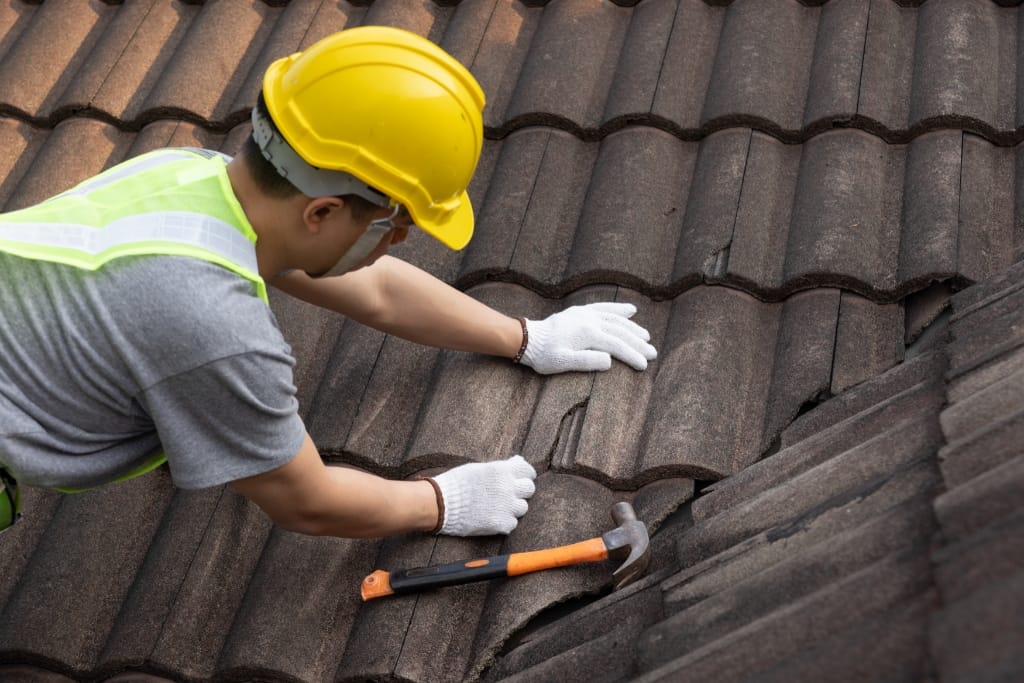The roof is one of the most critical structural elements of a home. It protects the entire house from external factors such as rain, hail, snow, and wind.
Therefore, when it comes to fixing or replacing your roof, it's crucial to understand the cost involved.
Many factors affect the cost of a new roof, some of which are obvious, while others are not.
In this article, we will explore nine factors that affect the cost of a new roof.
Hopefully, this will help you prepare better for the cost of your roofing project and budget accordingly.
1)) Roof Size
The bigger the roof, the higher the cost of a new roof. Contractors usually measure roof sizes in squares.
A square is an area that measures 100 sq. ft. The cost per square varies depending on the material used and the complexity of the roof.
A less complicated roof will be less expensive to install than a complex ones.
Tips for Managing Roof Size Costs:
- Plan Ahead: Accurately determine the size of your roof prior to seeking cost estimates. This will give you a ballpark figure and prevent unexpected costs.
- Consider Material Wisely: The type of material greatly influences the cost per square. Consider materials that are durable yet budget-friendly if cost is a major concern.
- Simplicity is Economical: A less complex roof design will be less expensive to install. If possible, opt for simpler designs to cut down on installation costs.
The size of your roof is a significant factor in determining the cost of a new roof.
By planning ahead, carefully considering material choice, and opting for simpler designs when possible, you can effectively manage these costs.
While initial costs are important, durability and quality of materials should not be compromised as they ensure longevity and reduce future repair or replacement expenses.
2)) Pitch
The pitch or the slope of the roof affects the cost of a new roof. Steeper roofs cost more to replace since they need complex equipment and more labor to install materials safely.
Flat roofs, however, are the least expensive to replace or fix.
Tips for Managing Costs Based on Roof Pitch:
- Evaluate Roof Slope: Understand the pitch of your roof and how it impacts the overall cost. Steeper roofs require more resources, hence they are more expensive.
- Safety First: For steeper roofs, ensure the contractor has the necessary safety equipment and experience to deal with the added risk. You might have to pay a premium for this, but it's worth it.
- Consider Roof Design: If you're building a new roof, consider a design with less pitch to reduce costs. However, remember that the design should also be functional and suitable for the local climate.
The pitch of your roof plays a pivotal role in deciding the overall cost of roof replacement or repair.
It's crucial to factor in safety measures and the additional resources required for steeper roofs when considering costs.
For new constructions, opting for a less steep roof design can be a cost-effective choice, given it meets functionality and local weather demands.
By understanding these aspects, you can better navigate the financial aspects of roof renovation projects.
3)) Material
The material of a roof is the foundation of its durability, functionality, and aesthetics.
Various materials are available in the market, including asphalt shingles, metal, slate, tile, and wood shakes.
Each of these materials has its price point, with asphalt shingles being the most affordable and tiles being the most expensive.
Tips for Managing Roof Material Costs:
- Research Different Materials: Understanding the costs and benefits of different materials can help you make an informed decision. Consider factors such as durability, maintenance, and aesthetics alongside the price.
- Consider Your Climate: The local climate plays a significant role in determining the best material for your roof. Some materials perform better in certain weather conditions, so choose a material that is appropriate for your location.
- Quality Over Cost: While it's important to consider cost, don't sacrifice the quality of your roofing material for a cheaper price. Investing in good quality roofing now can save you on repairs and replacements in the future.
The choice of roofing material significantly impacts the cost, longevity, and performance of your roof.
By thoroughly researching different materials, considering local weather conditions, and prioritizing quality over cost, you can make an informed decision that will provide optimal protection for your home while balancing your budget.
A wise initial investment in quality materials can result in long-term savings by reducing the need for frequent repairs or replacement.
4)) Roofing Company
The roofing company you choose affects the cost of a new roof. Some contractors charge more than others for the same work.
Do your research, check for reviews, and compare quotes from various contractors before making your final decision.
Tips for Choosing a Cost-Effective Roofing Company:
- Do Your Research: Look up various roofing companies online, read their reviews, and understand their reputation in the market. This will give you a sense of the quality of their work.
- Request Multiple Quotes: Reach out to multiple contractors and request quotes for your project. Compare these quotes to get a sense of the market rate and to find the best deal.
- Verify Licensing and Insurance: Always confirm that a roofing company is licensed and insured. While you might find cheaper quotes from unlicensed contractors, the potential costs due to poor workmanship or accidents could be much higher.
The selection of a roofing company can significantly affect the cost and quality of your roofing project.
A diligent research process, including reading reviews, comparing quotes, and verifying licensing and insurance, will help ensure that you choose a reputable, cost-effective contractor.
The cheapest quote may not always be the best choice; quality workmanship and professional conduct can save you from costly repairs or disputes in the future.
5)) Location
Your location affects the cost of a new roof. Roofing prices vary geographically depending on several factors, such as permits, labor, and material costs.
Roofing in rural areas is less expensive than in urban areas due to lower labor rates and lower overhead costs.
Tips for Managing Roofing Costs Based on Location:
- Understand Regional Pricing: Research local roofing prices to understand the average cost in your area. This can help you negotiate better with contractors and avoid being overcharged.
- Factor in Local Conditions: Consider local weather and environmental conditions when choosing materials. Certain materials may perform better in your location, potentially leading to cost savings in the long run.
- Consider Local Codes and Permits: Be aware of local building codes and permit costs, which can impact the total cost of the project. Ensure your contractor is well-versed in these requirements to avoid compliance issues and unexpected costs.
Your location plays a pivotal role in determining the cost of your roofing project.
By understanding regional pricing, factoring in local conditions, and adhering to local codes and permits, you can better manage and predict the overall expenses.
Ensure you choose materials appropriate to your climate and abide by local permit requirements to avoid costly complications.
Having a broad perspective of these location-specific factors can lead to strategic decisions, potentially yielding long-term cost benefits.
6)) Removal Of Existing Roof
The removal and disposal of an existing roof can add to the cost of a new roof.
Some homeowners may opt to have a new roof installed over an existing one to save on removal costs.
However, this is not always advisable as it can affect the integrity of the new roof.
Tips for Effectively Managing Costs for Roof Removal:
- Consider the Overall Health of Your Existing Roof: Before deciding to install a new roof over the existing one, have a professional assess the condition of your current roof. If it's in poor health, removal might be the best option to prevent future issues.
- Get Quotes Including Removal Costs: When getting quotes for a new roof, ensure they include the cost of removal and disposal of the existing roof. This will give you a more accurate view of the total cost.
- Understand the Long-Term Impact: While installing a new roof over the existing one may save costs initially, it could lead to higher costs in the long term due to potential structural issues or a shorter lifespan for the new roof.
The removal of an existing roof, though it may add to your initial costs, can be a strategic step in ensuring the longevity and integrity of your new roof.
By thoroughly assessing the condition of your current roof, getting comprehensive quotes that include removal costs, and understanding the long-term implications of your decisions, you can make a cost-effective choice that safeguards your home for the future.
An upfront investment in removal may save you from costly complications down the line.
7)) Roofing Accessories
Accessories such as gutters, downspouts, skylights, and chimneys affect the cost of a new roof. These accessories enhance the functionality and aesthetics of a roof.
They can either increase or decrease the cost of a new roof, depending on the quality and quantity of accessories used.
Tips for Managing Costs of Roofing Accessories:
- Prioritize Function Over Aesthetic: While accessories can enhance the look of your roof, it's crucial to prioritize functionality. Opting for essential accessories that improve your roof's longevity and resistance can help save costs in the long run.
- Consider Quality: Invest in high-quality accessories, even if they have a higher upfront cost. Good quality accessories tend to last longer and require less frequent replacements, leading to savings over time.
- Request Detailed Quotes: Ensure that quotes you receive from roofing contractors include a detailed breakdown of the costs for each accessory. This way, you can decide whether to include or exclude certain accessories based on your budget and needs.
Roofing accessories, while contributing to the aesthetic appeal of your home, should be selected based on their functionality and durability.
Prioritizing necessary accessories, investing in quality, and requesting detailed quotes can help you manage the costs associated with these additions.
With thoughtful and informed choices, roofing accessories can enhance your roof's lifespan and performance without imposing a significant burden on your budget.
8)) Labor
The cost of labor affects the cost of a new roof. The more complex the job, the more labor will be needed to install the new roof. This, in turn, affects the cost of the job.
Tips for Effectively Managing Labor Costs:
- Get Multiple Quotes: Always get multiple quotes from different contractors. This lets you compare labor costs and choose the most cost-effective option without compromising quality.
- Understand the Complexity of the Job: If your roofing project involves complex designs or challenging installation procedures, labor costs might be higher. Understanding this upfront can help you manage your budget more effectively.
- Consider Timing: The time of the year can impact labor costs. Roofing contractors may offer lower rates during their off-peak season. Planning your roofing project during these times could help you save on labor costs.
Labor costs can significantly influence the overall cost of a new roof.
However, by getting multiple quotes, understanding the complexity of the job, and cleverly planning the timing of your project, you can successfully manage these costs.
Selecting a roofing contractor should not solely be based on labor costs.
The quality of work and the contractor's reputation are equally important factors to consider to ensure a long-lasting and sturdy roof.
9)) Warranty
A warranty is an essential aspect of any roofing job. It determines the quality of the material used and ensures that a homeowner will not incur additional costs for reworks.
A warranty can be either a manufacturer's warranty or a roofing contractor's warranty.
Tips for Navigating Roofing Warranties:
- Understand the Different Types of Warranties: Familiarize yourself with the differences between a manufacturer's warranty, which covers the roofing materials, and a contractor's warranty, which covers the workmanship. Both are essential for comprehensive coverage.
- Read the Fine Print: Always read the warranty terms carefully. Look for conditions that could void your warranty, any maintenance requirements, and how long the warranty lasts.
- Verify Transferability: If you plan to sell your home in the future, check if your warranty is transferable. A transferable warranty can increase your home's value and provide peace of mind to potential buyers.
A warranty provides you with reassurance and protection for your roofing investment.
Understanding the different types of warranties, thoroughly reading the terms, and considering the warranty's transferability are all crucial aspects to consider.
A well-chosen and understood warranty can protect against unforeseen costs and enhance your home's value, making it a crucial factor in any roofing project.
Conclusion
Installing a new roof can be a significant investment, but one that brings substantial value to your home.
Cost factors such as materials, roof size, and pitch, removal of old roof, accessories, labor, and warranty all play a critical role in the overall budget.
By using these tips to manage each cost element - from prioritizing function over aesthetics, getting multiple quotes, understanding your project's complexity, and carefully navigating your warranty - you can ensure a cost-effective roofing project without compromising on quality.
A well-planned roofing project not only enhances your home's curb appeal but also ensures its long-term durability and protection.
Download Our Free E-book!








